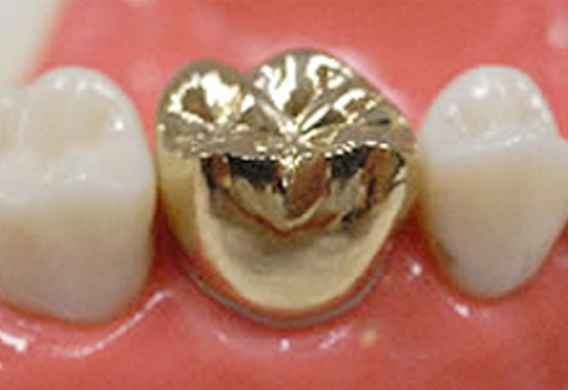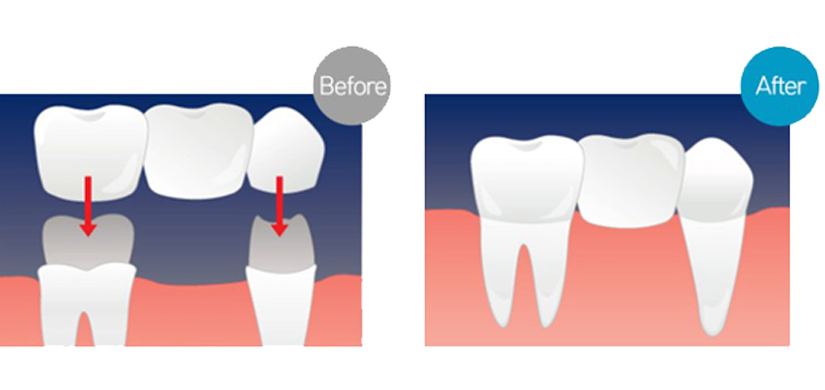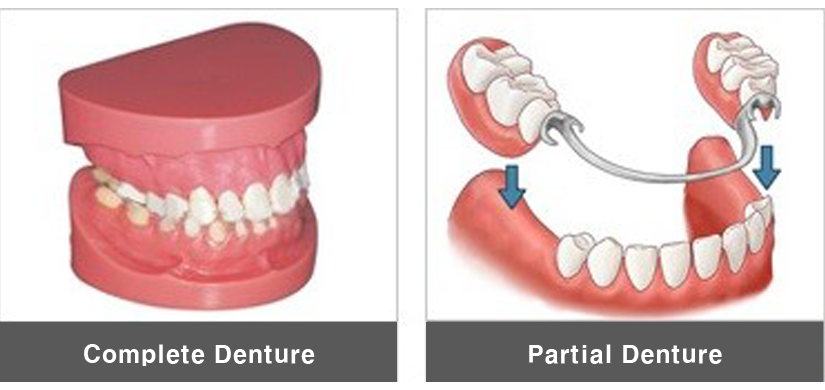Who needs Prosthesis?
- Lost a tooth
- Weak tooth due to RCT
- Damaged tooth due to cavity
- Cosmedic reasons

Types of Prosthesis
 Crown
Crown
A dental crown is a tooth-shaped “cap” that is placed over a tooth — to cover the tooth to restore its shape and size, strength, and improve its appearance.
The crowns, when cemented into place, fully encase the entire visible portion of a tooth that lies at and above the gum line. you can have a porcelain, gold, zirconia, metal crowns.

 Bridge
Bridge

Dental bridges literally bridge the gap created by one or more missing teeth.
A bridge is made up of two or more crowns for the teeth on either side of the gap — these two or more anchoring teeth are called abutment teeth — and a false tooth/teeth in between are called pontics and can be made from gold, alloys, porcelain, or a combination of these materials. Dental bridges are supported by natural teeth or implants.
 Dentures
Dentures

A denture is a removable replacement for missing teeth and surrounding tissues. Two types of dentures are available — complete and partial dentures. Complete dentures are used when all the teeth are missing, while partial dentures are used when some natural teeth remain.
Prosthesis Q&A
To protect a weak tooth from breaking result of decay and Root Canal Treatment,
To restore an already broken tooth or a tooth that has been severely worn down,
To cover and support a tooth with a large filling when there isn’t a lot of teeth left,
To cover misshaped or severely discolored teeth,
To cover a dental implant,
To make a cosmetic modification
Gold crowns are made of cast gold, a technique that has been in existence for over a hundred years and is the most successful. As aesthetics has become more of a factor, the use of gold is declining. Cast gold crowns have no match with regard to long-term service and minimal wear to opposing teeth, their greatest advantage. They may ultimately fail because of predictable wear of the metal through to underlying tooth structure and because of recurrent caries (decay).
Porcelain-fused-to-metal crowns
PFM crowns are relatively esthetic restorations that have been in use for more than 40 years. In one way, they combine the best of both worlds, a crown made of “precious or noble” metal (gold or platinum), which is strong, fits precisely and is bonded/cemented to the tooth. This metal substructure (beneath the porcelain) imparts strength and makes up for the porcelain’s weakness and fracture potential.
Bridges can: Restore your smile, Restore the ability to properly chew and speak
Maintain the shape of your face. Distribute the forces in your bite properly by replacing missing teeth. Prevent remaining teeth from drifting out of position.
Handle dentures with great care. To avoid accidentally dropping them, stand over a folded towel or a full sink of water when handling them. Brush and rinse dentures daily, but not with toothpaste but Clean with a denture cleaner. Dentures need to be kept moist when not being worn so they do not dry out or lose their shape. When not worn, dentures should be placed in a denture cleanser soaking solution or in water.
Dentures have a base, generally made of resin, which sits on top of the existing gum line. These soft tissues are very sensitive and if the denture does not fit properly, it will move while eating and speaking, rubbing the gums. If a permanent denture is placed before the gums and jaw have fully healed, typically 8-12 weeks, it will likely become loose and need adjustment.
Food debris and bacteria – that usually forms at the gum margin, the junction where the tooth and crown meet. If plaque is allowed to form at the margin and not removed, then a new cavity will eventually form and you will need your crown to be replaced.

